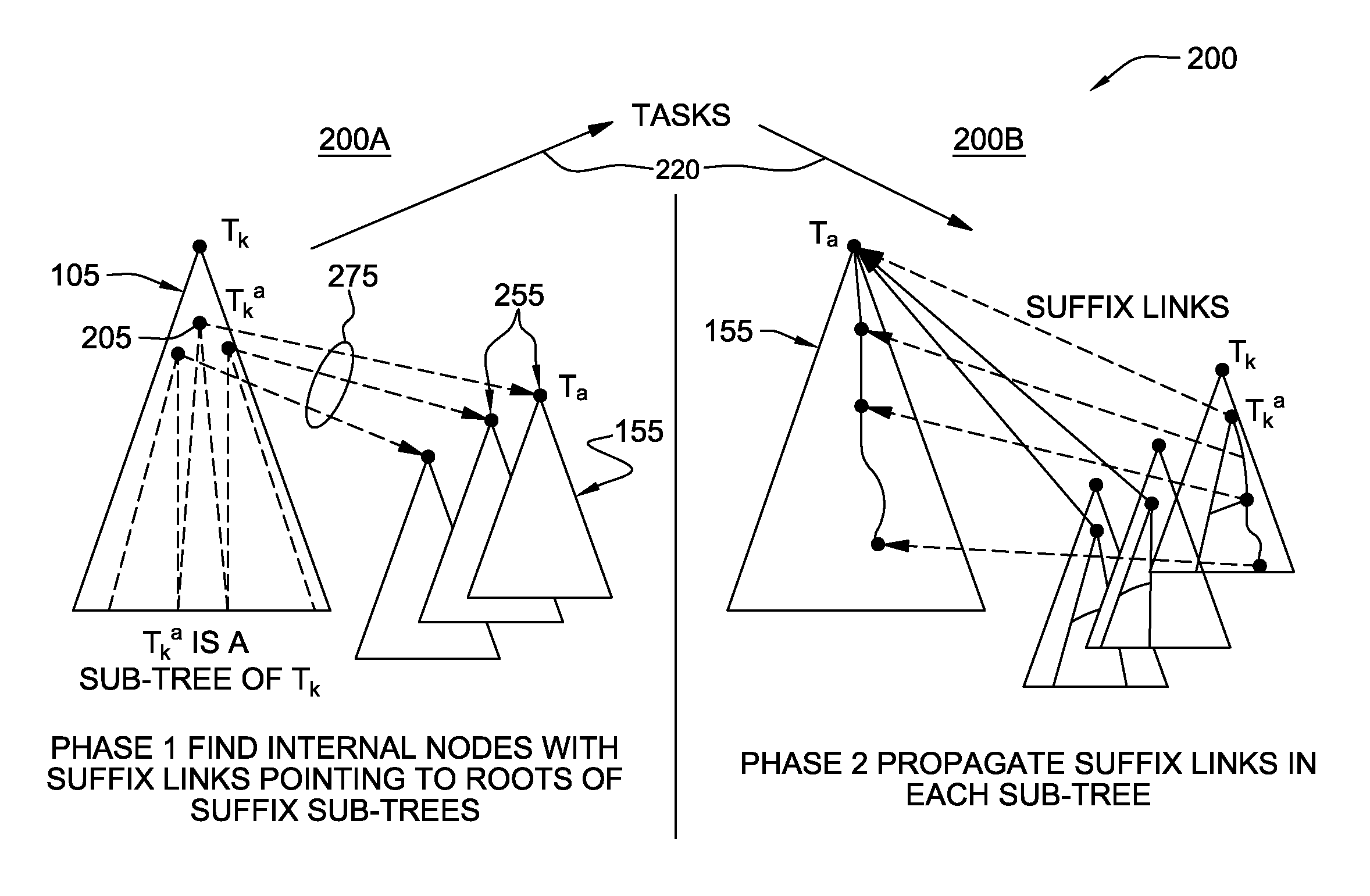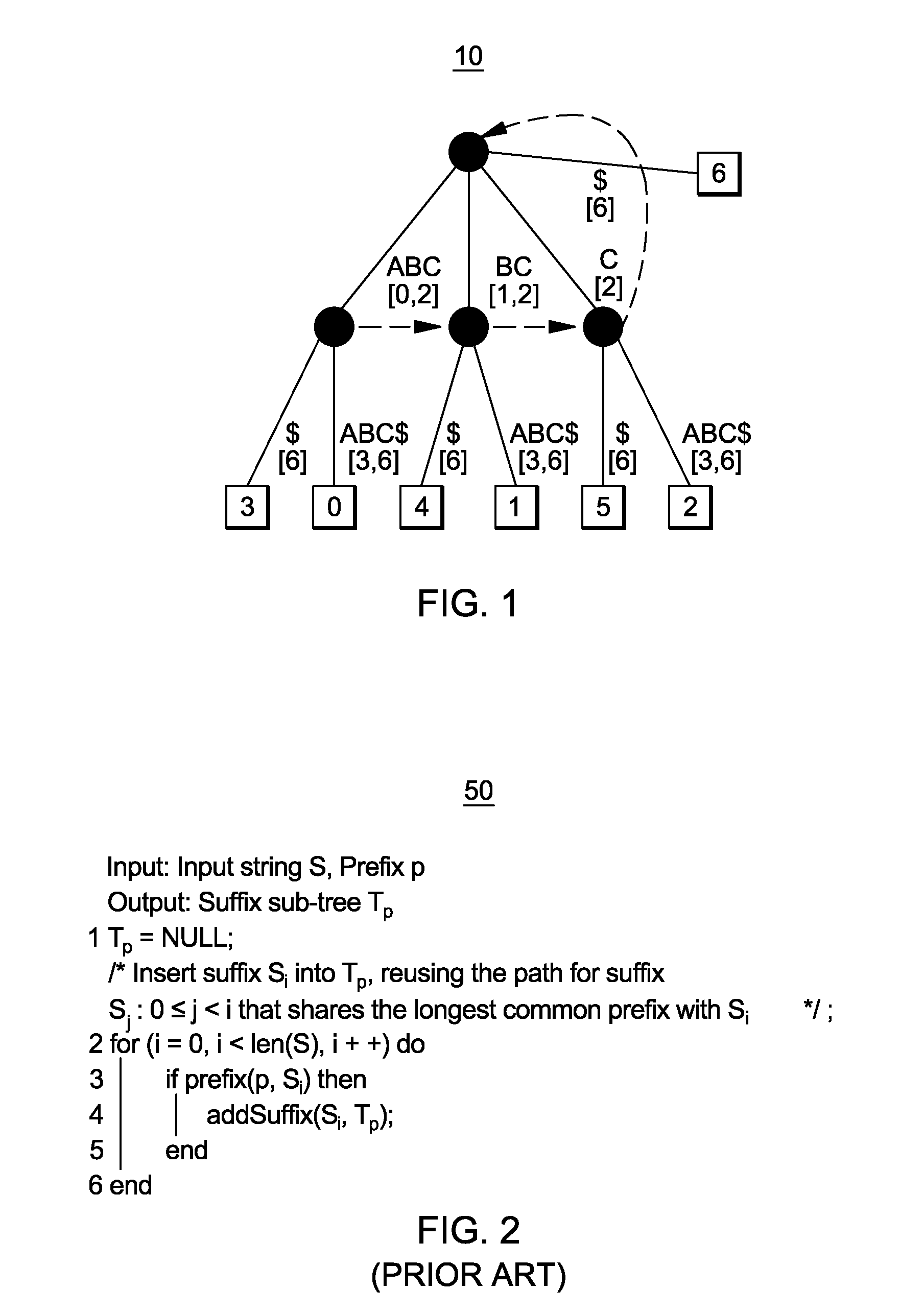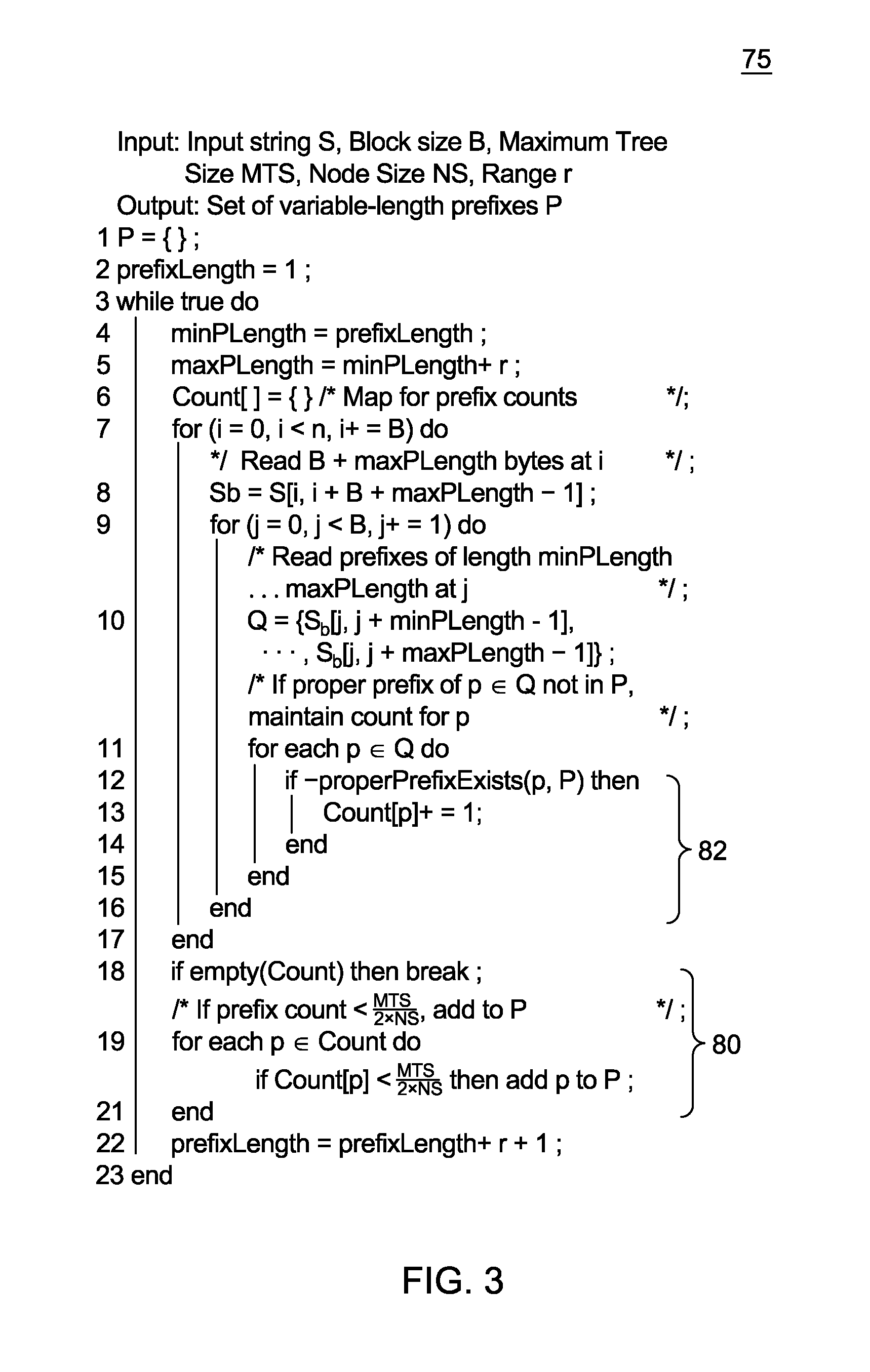Serial and parallel methods for I/O efficient suffix tree construction
a suffix tree and efficient technology, applied in the field of serial and parallel methods for efficient suffix tree construction, can solve the problems of affecting the widespread applicability of the technology, the construction of suffix trees is believed to not scale well with the size of input strings, and the construction time remains daunting
- Summary
- Abstract
- Description
- Claims
- Application Information
AI Technical Summary
Benefits of technology
Problems solved by technology
Method used
Image
Examples
Embodiment Construction
[0030]The suffix tree is a fundamental data structure in string processing as it exposes the internal structure of a string in a way that facilitates the efficient implementation of a myriad of string operations. Examples of these operations include string matching (both exact and approximate), exact set matching, all-pairs suffix-prefix matching, finding repetitive structures, and finding the longest common sub-string across multiple strings. Over the past few decades, the suffix tree has been used for a spectrum of tasks ranging from data clustering to data compression. Its quintessential usage is seen in the bioinformatics domain where it is used to effectively evaluate queries on biological sequence data sets.
[0031]By way of background, and providing terminology that is used in the following description, the creation of a suffix tree is now generally described: Letting “A” denote a set of characters, S=s0, s1, . . . , sn−1, $, where siεA and $ εA, denotes a “$” terminated input ...
PUM
 Login to View More
Login to View More Abstract
Description
Claims
Application Information
 Login to View More
Login to View More - R&D
- Intellectual Property
- Life Sciences
- Materials
- Tech Scout
- Unparalleled Data Quality
- Higher Quality Content
- 60% Fewer Hallucinations
Browse by: Latest US Patents, China's latest patents, Technical Efficacy Thesaurus, Application Domain, Technology Topic, Popular Technical Reports.
© 2025 PatSnap. All rights reserved.Legal|Privacy policy|Modern Slavery Act Transparency Statement|Sitemap|About US| Contact US: help@patsnap.com



